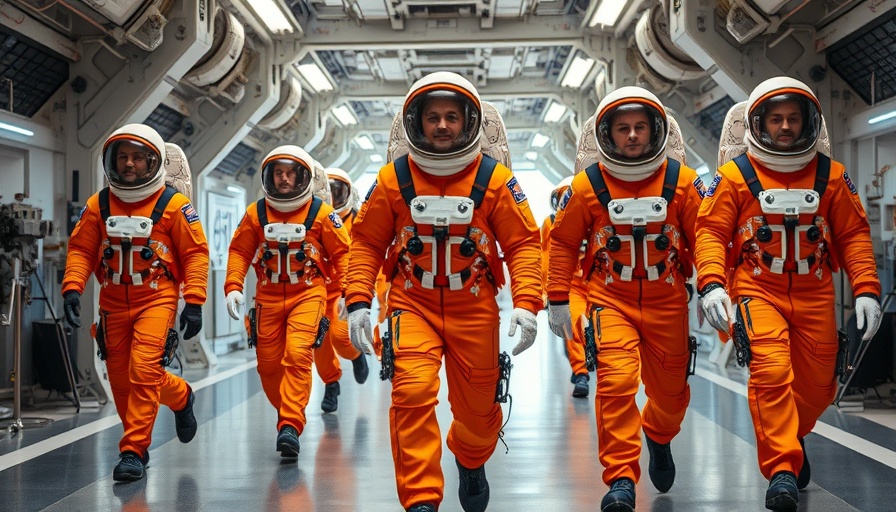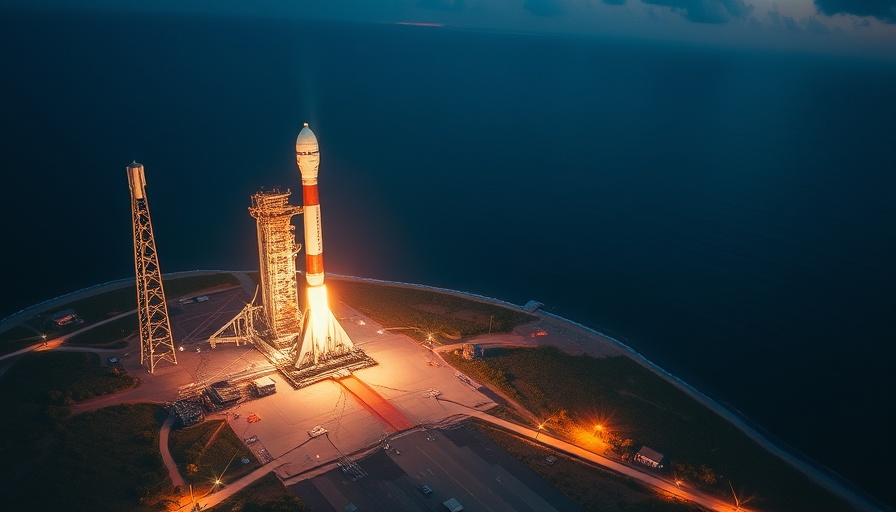
Artemis 2 Crew Prepares for Historic Moon Mission
As humanity inches closer to returning to the Moon, the four astronauts of NASA's Artemis 2 mission are training rigorously—reflecting their commitment to safety and efficacy. Conducting a nighttime rehearsal of launch procedures, the team is fine-tuning their approach ahead of the much-anticipated liftoff, aimed for early 2026.
Nighttime Destinies: Why the Timing Matters
Nighttime launches pose specific challenges that can affect visibility, communications, and overall mission success. During their rehearsal at Kennedy Space Center, the astronauts rigorously practiced Emergency Egress Procedures (EEP), which are essential if quick evacuations are needed during a launch day emergency. Such simulations not only enhance the astronauts' preparedness but also signify the technological advancements integrated into their training.
The Artemis Team: A Diverse Group of Innovators
NASA astronauts Reid Wiseman, Victor Glover, and Christina Koch join Canadian Space Agency astronaut Jeremy Hansen, showcasing a remarkable collaboration that extends beyond national borders. This formidable assembly of talents and experiences exemplifies a new era of innovation in space exploration, underscoring the importance of teamwork in overcoming challenges. Their diverse backgrounds reflect a growing commitment to inclusivity in STEM fields, shepherding in a new generation of leaders in space technology.
Emergency Egress Procedures: A Lifesaving Protocol
The astronauts practiced EEP at the Vehicle Assembly Building where the Space Launch System rocket is being prepped. The training includes rapid evacuations via specially designed cable baskets, which transport crew members away from the rocket in emergencies. Procedural drills like these are not just routine; they are critical in ensuring astronauts can react swiftly under pressure, emphasizing the connection between innovation and safety.
What to Expect: The Journey Ahead
Artemis 2 is more than a mission; it's a pioneering venture into the unknown, marking humanity's push toward sustained lunar presence. Orbiting the Moon, the crew will adopt a "free-return" trajectory—a strategy ensuring that if any failures emerge during launch, the crew will be gravitationally directed back to Earth, showcasing NASA's innovative approaches to risk management in space travel.
Call to Action: Engaging with Space Innovation
As we watch these astronauts prepare for their historic mission, consider how advancements in space exploration reflect broader innovative trends in technology. Join the conversation on future innovations and how they shape our lives on Earth by subscribing to newsletters and following updates from space agencies.
 Add Row
Add Row  Add
Add 




Write A Comment